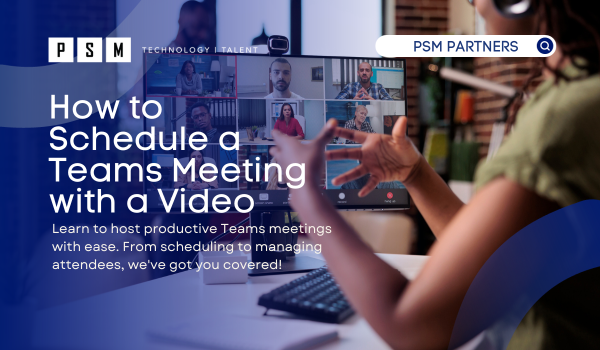Table of Contents
ToggleScheduling a Teams meeting is a straightforward process that allows you to plan and organize virtual gatherings with ease. Whether it’s for work, school, or personal purposes, Microsoft Teams offers a convenient platform for connecting with others remotely. In this guide, we’ll walk you through the simple steps to schedule a Teams meeting, ensuring you can bring people together efficiently and effectively. So, if you’re ready to harness the power of Teams for seamless collaboration, let’s dive into the process of scheduling your first meeting.
Sending a Teams Meeting Invite
Click either the “New Appointment” or “New Meeting” button (the phrasing can differ based on your Outlook version) to initiate a new event window, and within this window, select the “Teams Meeting” button or the “Teams” icon to embed a Teams meeting link into the event. (This message will be visible if you have Teams integrated into your Outlook.)

Incorporating a Teams meeting is a straightforward process – just click the Teams meeting button. This action will automatically fill in your email with all the appointment particulars, including the appointment link and the necessary meeting information, while also designating the location as “Microsoft Teams Meeting.”
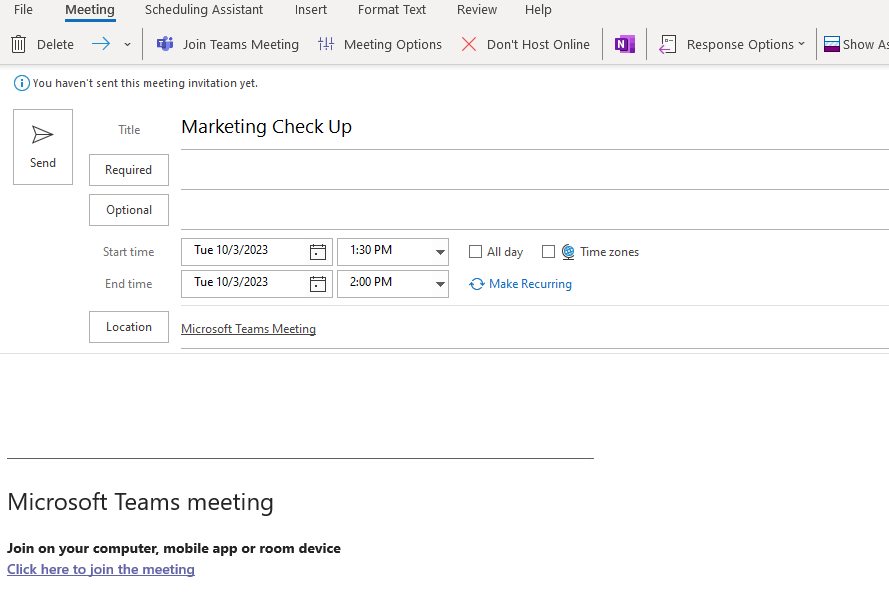
Selecting “meeting options” provides you with the ability to modify and personalize meeting settings. These options encompass the choice to bypass a lobby when joining the meeting, ensuring participants don’t need to wait for you to initiate or join the meeting.
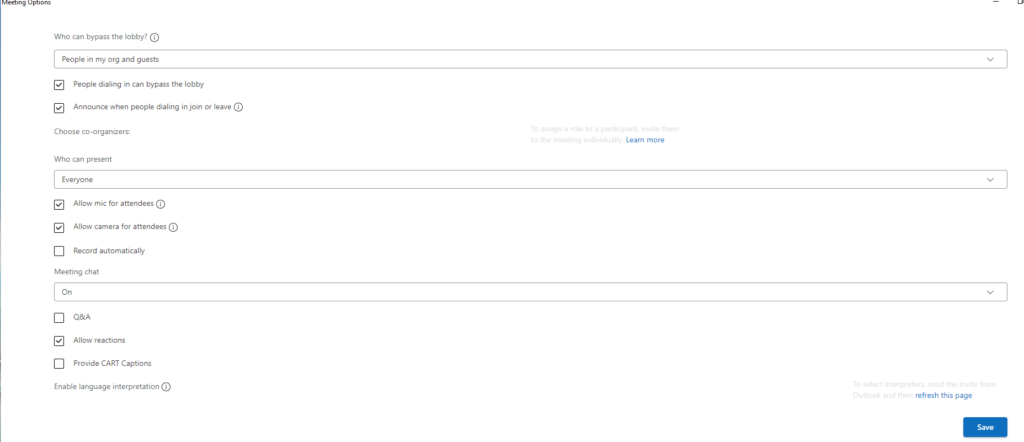
Hosting a Teams Meeting
When entering your own meeting, the process mirrors that of joining any other Teams meeting. Before commencing, you’ll encounter a range of options to select your preferences for video and audio settings. An added feature in Teams is the ability to customize your background or apply a blur effect when using your camera, enabling you to safeguard your privacy while still displaying your face.
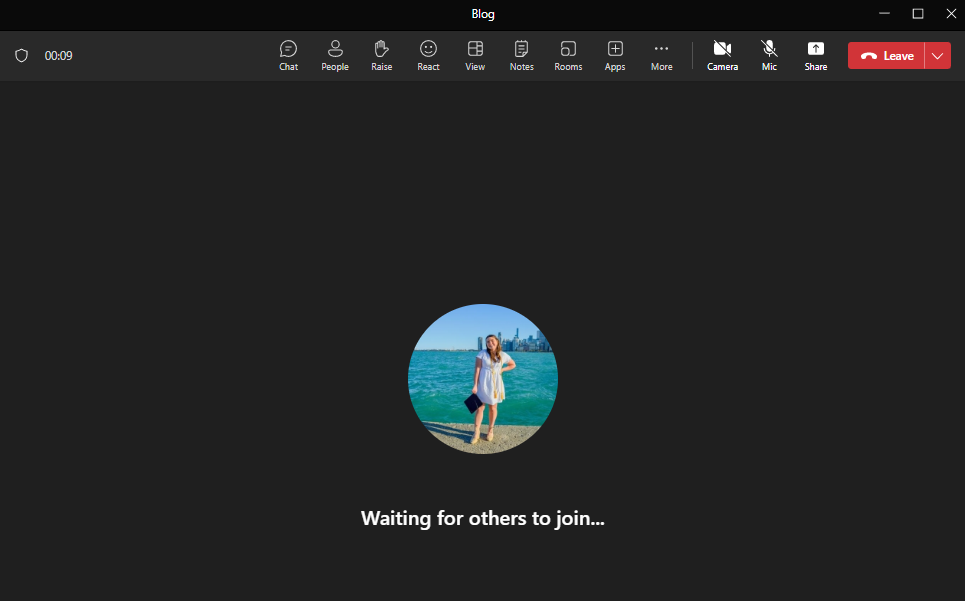
The responsibility of admitting individuals to the meeting falls on the monitor’s shoulders. You will authorize individuals to exit the lobby and participate in the meeting. In many instances, there might be individuals attempting to gain access without proper permission. Having a lobby in place simplifies the process as it serves as a holding area, ensuring that individuals wait there until you grant them entry.
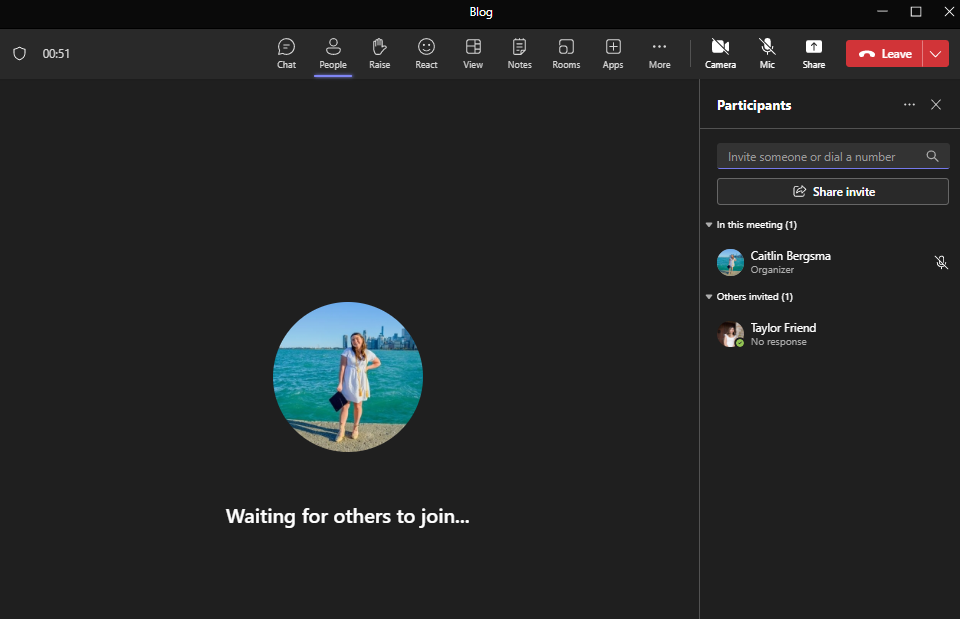
In most instances, you’d authorize their access to the meeting. Nonetheless, if the meeting link happens to fall into unauthorized hands, you have the option to employ the second or third choice to bar their entry.
Once an individual gains entry, they will be listed in the “In this meeting” section. By default, those individuals in this category have the following privileges:
- The ability to share their screen for presentations.
- The capability to mute other participants.
- The power to expel individuals from the meeting.
- The authority to admit participants from the virtual lobby.
However, in specific scenarios, you might wish for certain individuals to participate in the meeting without these privileges. To achieve this, simply right-click on each person and select “Designate as an attendee.” Additionally, you can choose to either remove or mute them if their actions are disruptive.
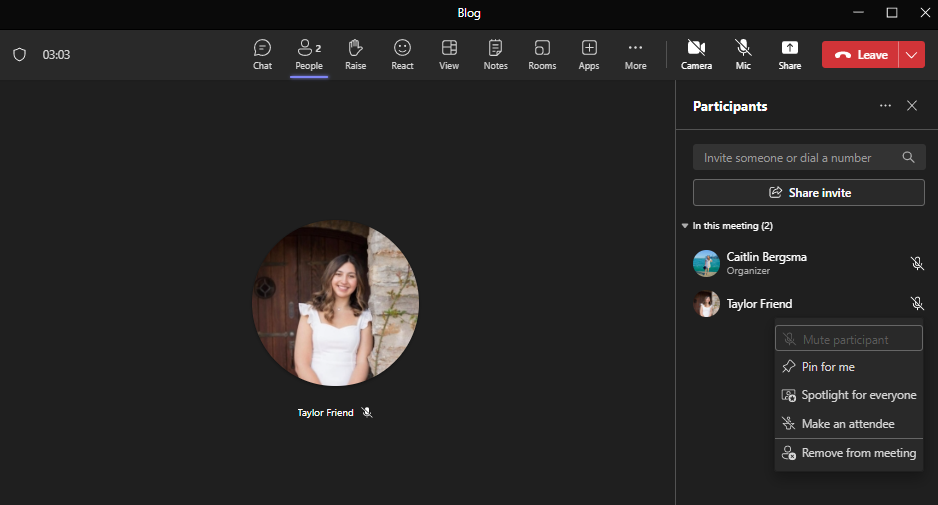
When individuals join the group, they will be automatically categorized as presenters. If you wish to modify their status, you can check under the “Attendees” section. This will enable you to adjust their role, whether you want them to remain as attendees or switch to presenters.
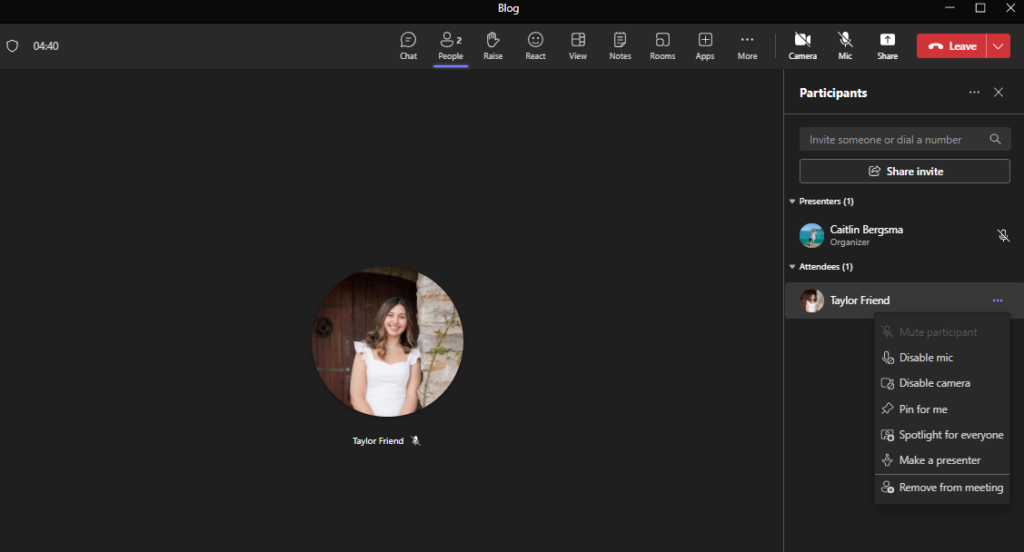
When you are leading the meeting, you possess the authority to conclude the entire session for all participants. This is different from being an attendee, where your only option is to leave. As the meeting’s host, you can take the decisive action to officially end the meeting. Simply click the arrow next to the “Leave” option and select “End meeting.”
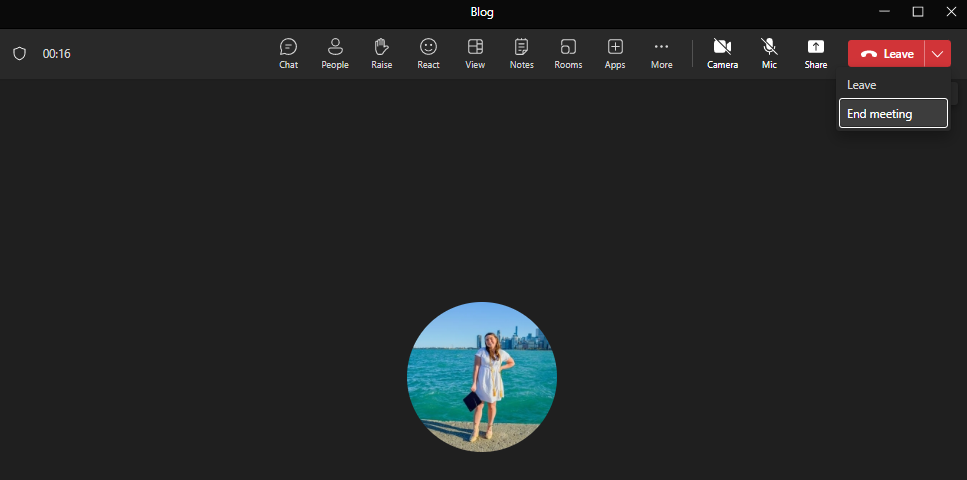
Teams Meeting Tips
Now that you’re acquainted with hosting a Teams meeting, it’s time to explore some fun tricks that can enhance your meeting experience. Whether it’s blurring your screen, raising your hand, or sharing your screen, you’ll have all the essential tips to host an engaging and successful Team’s meeting.
Background Set-Up
Now that you’re acquainted with hosting a Teams meeting, it’s time to explore some fun tricks that can enhance your meeting experience. Whether it’s blurring your screen, raising your hand, or sharing your screen, you’ll have all the essential tips to host an engaging and successful Team meeting.
Sharing your Screen
Sharing your screen becomes crucial when you have something to display to the attendees. On the upper right corner of your screen, you’ll find a button labeled “Share Content.” Click on this button, and it will provide you with a range of options for what you’d like to share. The possibilities are vast, allowing you to share items such as your desktop, an entire window, a PowerPoint presentation, or even enable the option to share a whiteboard.
Show Reactions & Raise your Hand
Another choice is to use the “Raise Hand” and “Show Reactions” features, which permits attendees to engage in the conversation without the necessity of speaking. To do this, simply click on “Raise Hand.” This signals to others that you wish to participate in the conversation without interrupting. Additionally, you have the option to express reactions with either applause or a heart symbol.
Breakout Rooms
Setting up breakout rooms can facilitate the organization of separate conversations for brainstorming and then reuniting to consolidate ideas. As the host, you can follow three simple steps:
- Navigate to the controls and click on “Breakout Rooms.”
- Specify the number of rooms you need and the desired number of participants in each.
- Click “Create Rooms” to initiate and start the breakout sessions.
Hosting your own Teams meeting is quite like participating in one. It’s important to familiarize yourself with the available options and how to adjust meeting settings to make the most of your experience. If you have any questions or need assistance, please feel free to reach out to us at any time. As Microsoft Partners, we are here to support you as needed.
Related Insights
Why a Colocation Data Center is Good for Your Business: Six Key Reasons to Consider
According to a recent report, there are 523 companies in...
Read MoreMSP vs. VMS: What’s the Difference, and Which is Better for Staffing and Managing Contingent Labor?
Contingent workers are reshaping the modern workforce, providing companies with...
Read MoreNIST Cybersecurity Framework 2.0 Released: Key Updates and Changes
In today’s rapidly changing IT environment, having a robust security...
Read MoreComparing COM/VSTO Add-ins vs. Office Add-ins for Law Firms: Microsoft Office 365 Integrations
The utilization of Microsoft products spans across various industries, with...
Read MoreAbout the Author

Caitlin Bergsma
Caitlin is an accomplished Marketing professional with an unwavering enthusiasm for the dynamic world of the IT industry. Caitlin's journey in the field began after earning her Bachelor's degree in Health Communications from Trinity Christian College, where she honed her skills and developed a keen eye for identifying market trends.

